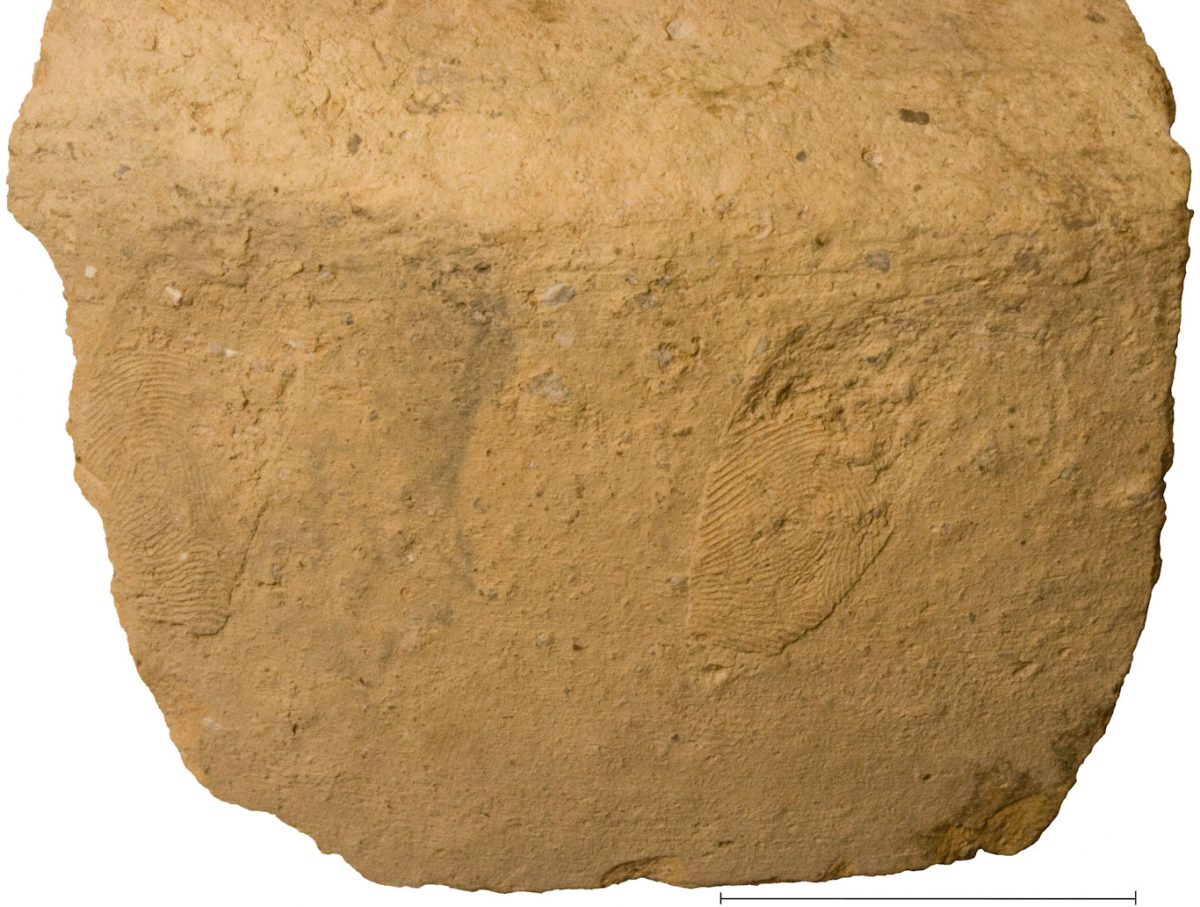
This one is of the index and middle fingers of the right hand on the bottom of a storage vessel. Scale is 5 cm. // Image: Kent Fowler
UM anthropologist develops technique to age and sex ancient fingerprints
Anthropology professor Kent Fowler and his colleagues have just published a paper in PLOS One that explains a method he developed to age and sex fingerprints preserved in ancient pottery.
This new method enables researchers to examine how labour was divided between people 4,700 years ago, enabling us to know who was involved in making pottery in the past, thereby enriching our understanding of humanity’s story.
There is an intimacy to studying ancient fingerprints, Fowler says, one that now seems more potent during a time of forced physical distancing in light of COVID-19.
“These are the fingerprints of 4,700-year-old people! Right there to see. To connect with. It is very intimate. It does freak me out a bit, but I get over it and I just think it would have been nice to meet them,” he says.
And now he and his team know a lot more about who they would be meeting.
“Knowing age and sex of printmakers allows us to create a demographic profile of ancient populations that does not rely on the study of human remains, or it can complement those studies,” Fowler says. “These profiles can also tell us about how labour was organized, how the craft was learned, and can challenge some long-held assumptions about who was involved in the craft in different societies.” Prints allow us to do more than guess based on historical parallels.
The method he developed can be applied to pottery of any age and to any culture that made objects from clay (vessels, figurines, bricks, seals, tokens, and writing tablets).
One of the studies reported in the paper, “The division of labour and learning pottery-making at Early Bronze Age Tell eṣ-Ṣâfi/Gath, Israel” focuses on a 100-year timeframe in an urban neighbourhood of a emerging city state in the Levant about 4,700 years ago, a time when the first cities and state societies are emerging in this area.
Fowler and his team report that most fingerprints were made by adult and young males. Children’s prints are in evidence but only occur on handles. And multiple prints of different age and sex on the same vessels suggest they were impressed during the training of young potters.
“Production appears dominated by adult and young males working alone, together, and in cooperation with adult and, or, young females,” he says. “Vessels with prints made exclusively by females of any age are rare.”
This male dominant cooperative labour pattern contrasts with recent studies showing that adult women primarily made Neolithic figurines in Anatolia, and men were exclusively making pottery in the city-states of northern Mesopotamia (Syria).
Research at the University of Manitoba is partially supported by funding from the Government of Canada Research Support Fund.






